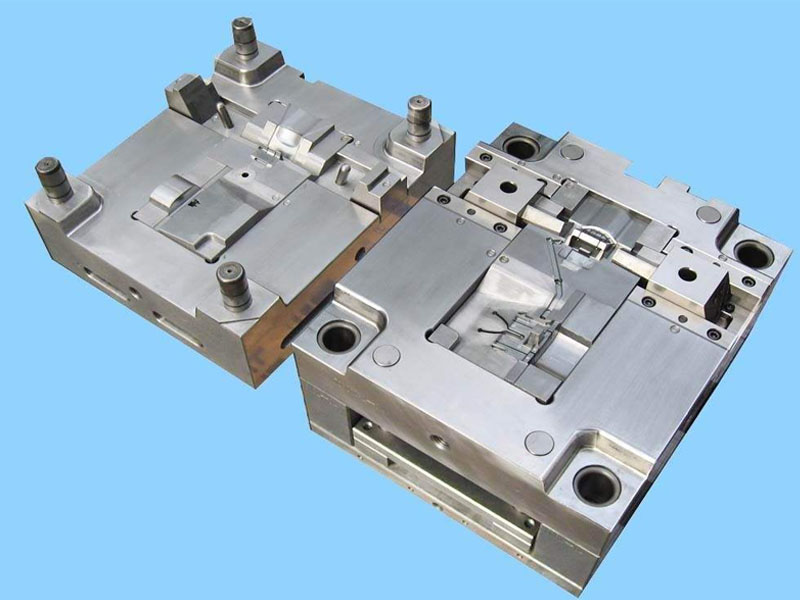When the melt is injected into a cavity with a large volume under high-speed and high-pressure conditions, melt fracture is very easy to occur. At this time, the surface of the melt appears transverse fracture, and the fracture area is roughly mixed on the surface of the plastic part to form a paste spot. Especially when a small amount of melt is directly injected into the cavity that is prone to be too large, the melt fracture will be more serious, and the paste spot will be larger.
The nature of melt fracture is caused by the elastic behavior of the polymer melt. When the melt flows in the barrel, the melt near the barrel is rubbed by the barrel wall, and the negative force is large, and the flow speed of the melt Smaller, once the melt is injected from the nozzle, the negative force acting on the tube wall disappears, and the flow rate of the melt in the middle of the barrel is extremely high. The melt at the barrel wall is carried by the melt at the center and accelerated. The flow is relatively continuous, and the flow velocity of the inner and outer melt will be rearranged, tending to the average velocity.
During this process, the melt will undergo a sharp stress change and strain will occur. Because of the extremely fast injection speed, the stress received is extremely large, which is far greater than the strain capacity of the melt, leading to melt fracture.
If the melt encounters a sudden shape change in the flow channel, such as diameter shrinkage, expansion, and a dead angle, the melt stays and circulates at the dead angle. The force is different from the normal melt, and the shear deformation is larger. When mixed into the normal flow material and injected, the deformation of the two is inconsistent and cannot be bridged. If the disparity is large, fracture and rupture will occur, and its manifestation is also melt fracture.

It can be seen from the above that it is necessary to overcome the rupture of the trapped melt and avoid the occurrence of smears:
1.To pay attention to eliminate the dead corners in the runner and make the runner as streamlined as possible;
2.To appropriately increase the temperature of the material, reduce the relaxation time of the melt, and make it easier to recover and bridge the deformation;
3.Adding low-molecular substances to the raw materials, because the lower the molecular weight of the melt, the wider the distribution, which is more conducive to reducing the elastic effect;
4.The fourth is to properly control the injection speed and screw speed;
5. It is very important to set the gate position reasonably and choose the correct gate form. Practice has shown that the use of expanded point gates and latent gates (tunnel gates) are ideal. It is best to choose the location of the gate after the melt is injected into the transition cavity first, and then enter the larger cavity. Do not let the flow material directly enter the larger cavity.
Get your plastic injection molding projects started today
When you send out 3D CAD documents to us, JY Machinery will provide you with instant price, on-demand delivery time, as well as design for manufacturability comments for your customized plastic components on materials and also producing process, to make sure that the component can meet your expectations as well as budget plan demands.
评论
发表评论